
Excel QTO Roofing Quantity Takeoff & Pricing Database
Absolutely No Geometry Required!
This is version 4 of a proven takeoff software for accurately estimating residential composition shingle roofing projects. With just a basic understanding of Microsoft Excel®, anyone can estimate the most complex of roofs without having to know any geometric equations. A complete list of features is included at the bottom of this page.
New to Version 4
- PlanSwift® Integration
- For PlanSwift® users, the plug-in toolset is included for FREE allowing takeoffs to be performed on-screen. Roof geometry is accurately quantified by tracing areas and roof lines from architectural plans and aerial images.

PlanSwift® is a third-party software and must be purchased separately, however a 14-Day free trial is available.
- VisionREZ® BIM Integration
- For VisionREZ® for AutoCad Architecture users, the custom toolset is included for FREE allowing roof geometry to be extracted from the 3D Building Information Model.

VisionREZ® is a third-party software and must be purchased separately.
Estimating from field measurements and scaled architectural roof plans
Excel QTO's legacy "tried and true" tools for manual roof surface area takeoffs are centered around breaking each roof plane into one or a combination of these shapes, then entering the necessary dimensions into the "Roof Geometry" worksheet.
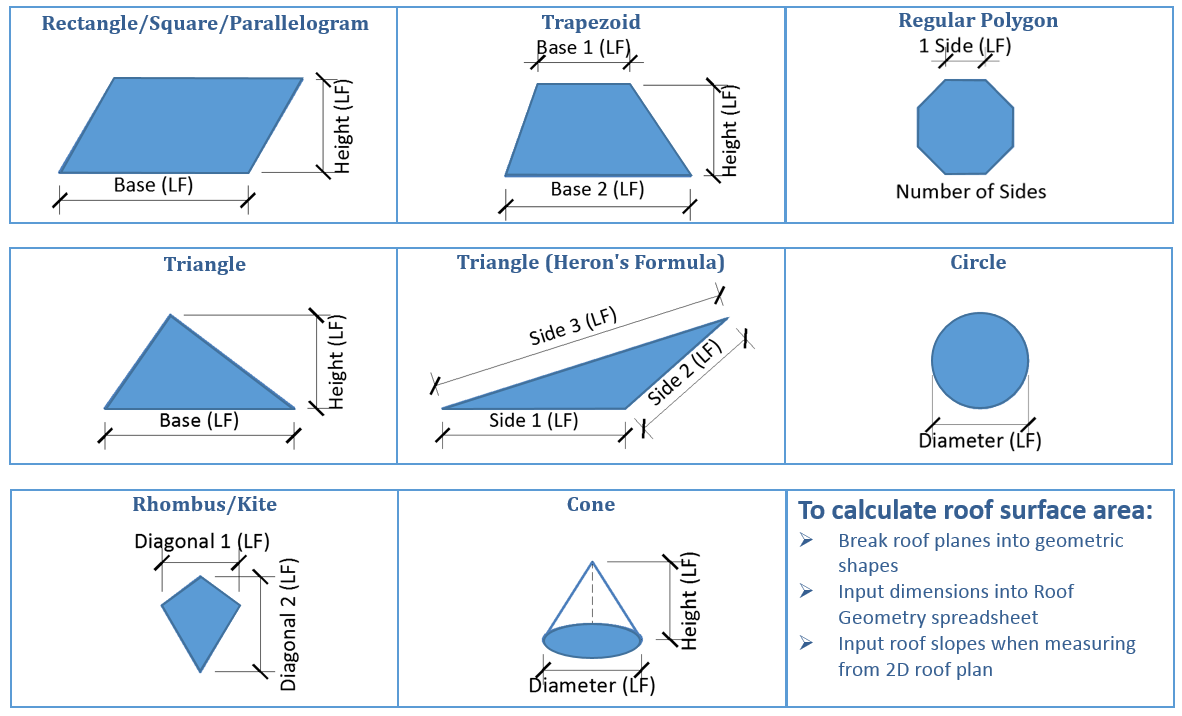
This simple roof is made up of trapezoids and triangles:
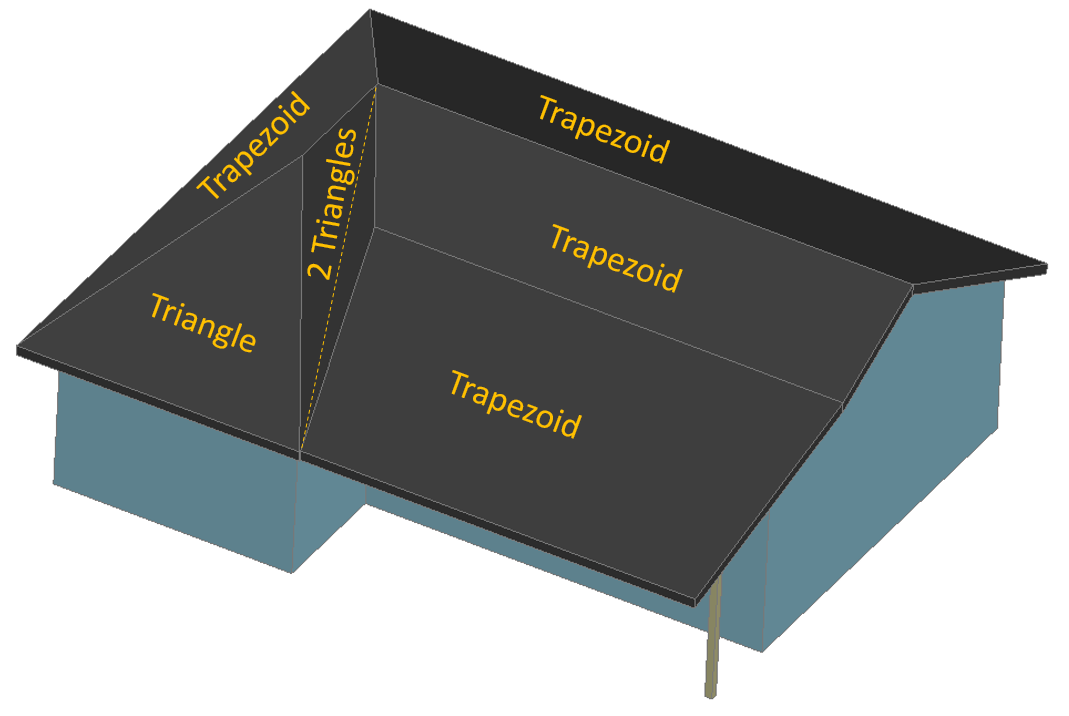
Just the dimensions of each shape and roof slope are entered into the spreadsheet:
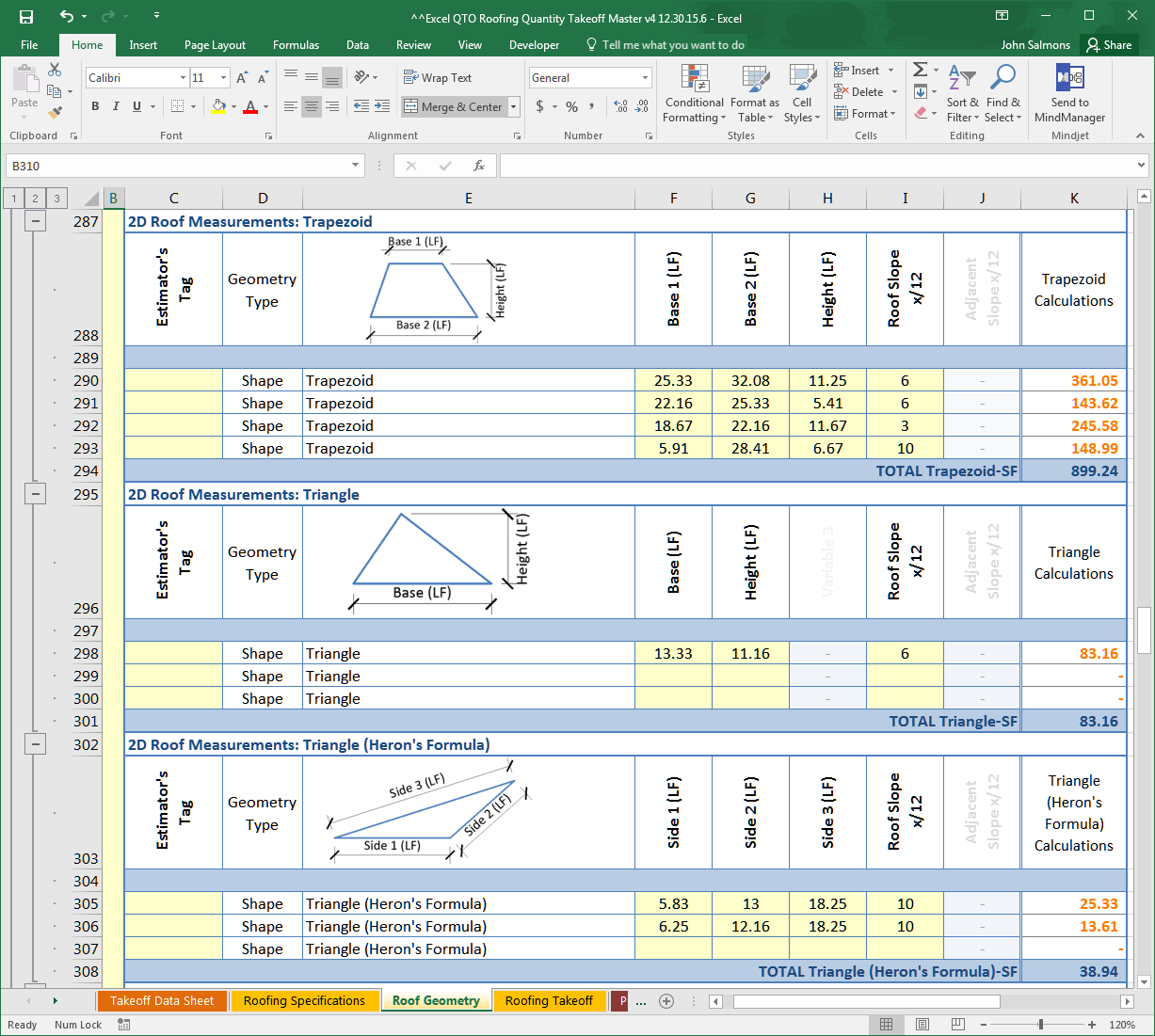
All roof surface areas are totaled to drive material and labor takeoffs for field shingles, underlayment and nails. Additional takeoff items can include costs for tearoff, delivery, loading, site cleaning or any other project costs driven by the square.
The software's legacy "tried and true" tools for length based takeoffs including hips, valleys, ridges, rakes, eaves, pitch breaks and flashing remain both simple and highly accurate. When manually estimating from architectural roof plans, the "drawn" length of the roof line, plus the applicable roof slope(s) are entered into the "Roof Geometry" worksheet.

The built-in intelligence of the hip and valley length calculations work with both single and multiple pitched roofs.
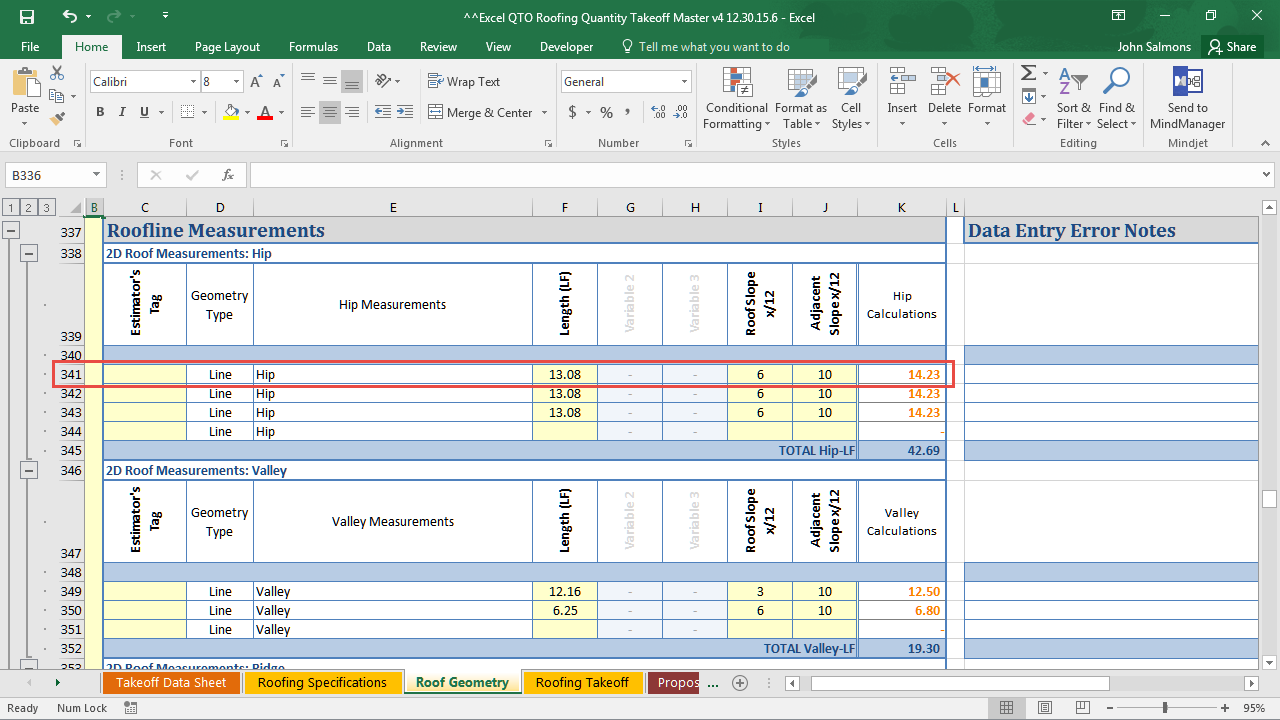
Takeoff Data Sheet
The datasheet is a printable form to be used for recording manual takeoff roof geometry. The intent is to print it as a double-sided 11x17 form to be taken on the roof or used alongside the architectural plan. Once complete, the form may be handed off to another person to finalize the takeoff.
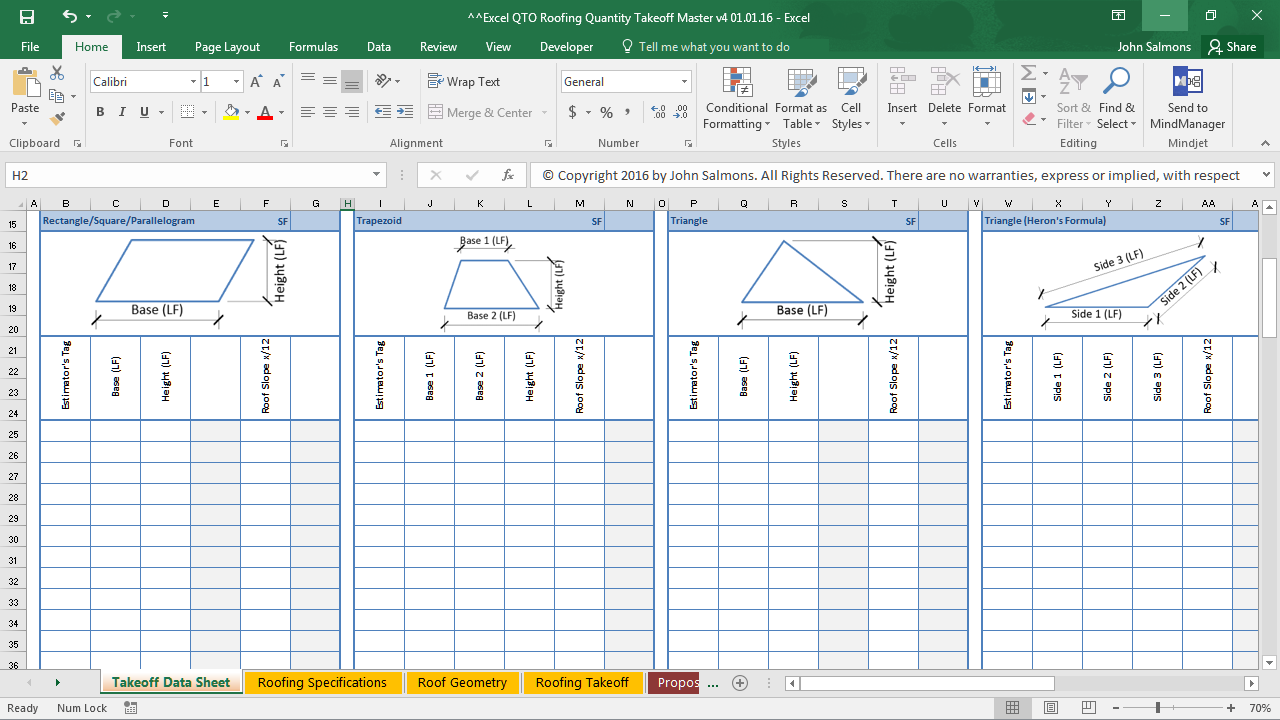
Roofing Material and Installation Specifications
Roof measurements are converted to specific materials based on the selections set on the "Roofing Specifications" worksheet. Excel's in-cell dropdown lists are linked to the 500+ item database which includes the materials most commonly used for residential composition shingle roofing projects.
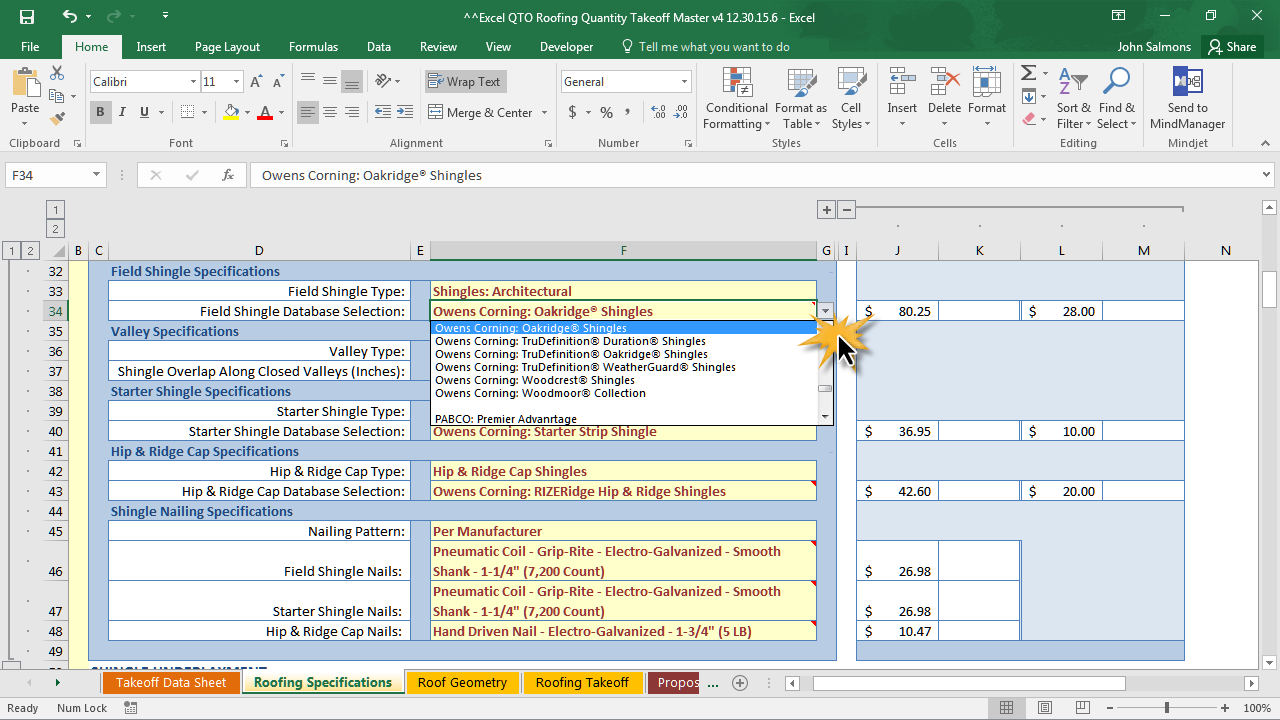
The "Roofing Specifications" worksheet is also used to specify precisely how materials are to be installed.
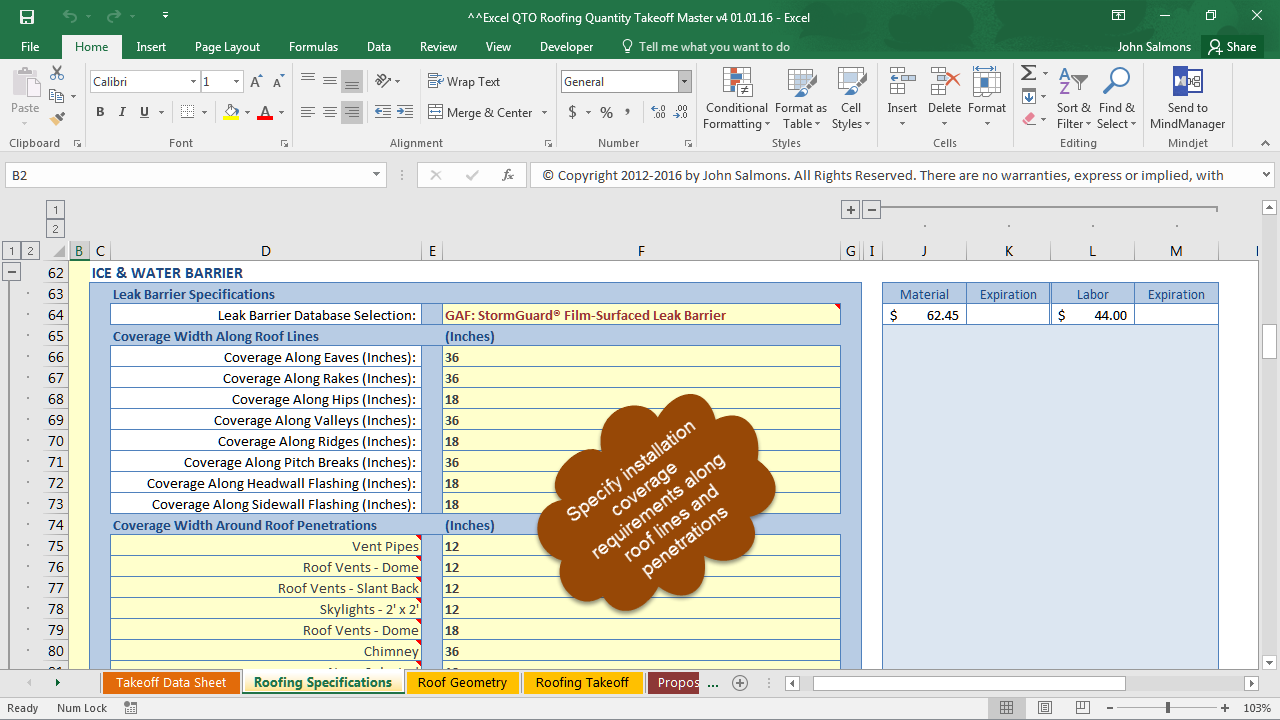
Not only does this information drive the takeoff, the printed specs can also act as a guide for the roofer to install materials exactly as estimated and intended.
The Roofing Takeoff
The "Roofing Takeoff" worksheet combines the specifications with the roof geometry to produce an itemized takeoff. Once your pricing is added to the database, the takeoff includes line-item material and labor costs.
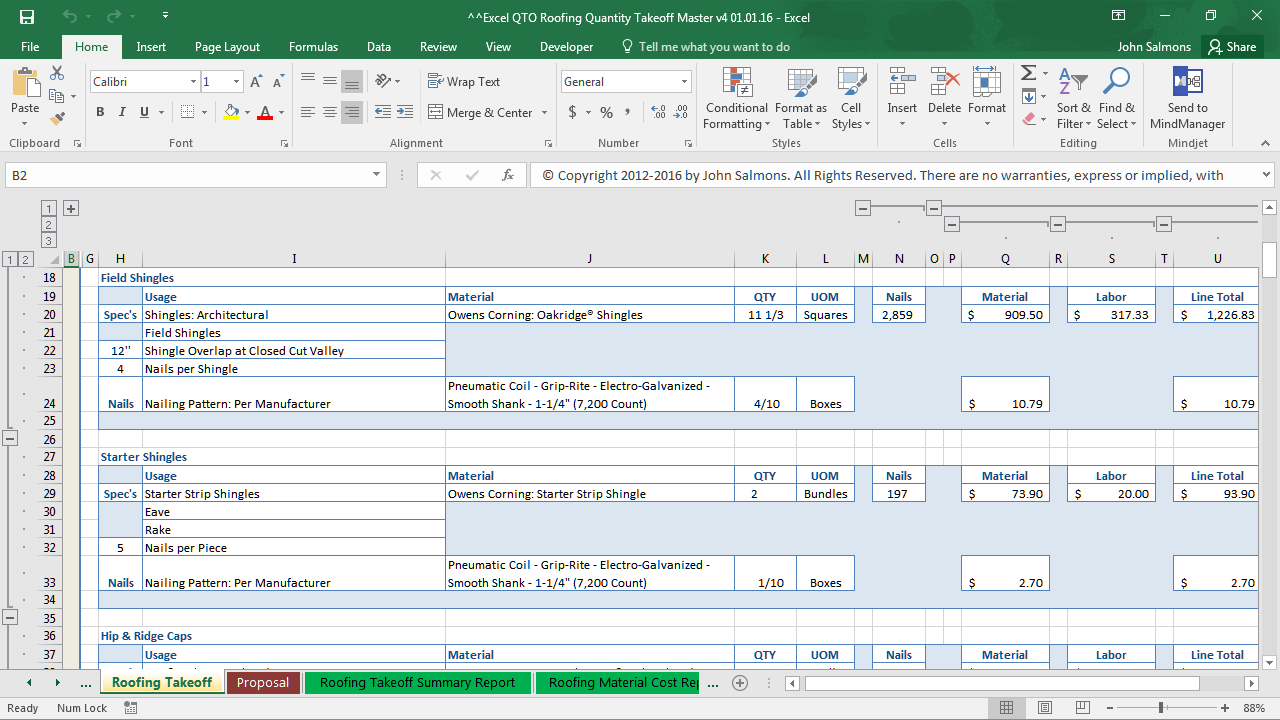
Roofing Proposal
Upon completion of the takeoff, a customizable "Proposal for Roofing" is automatically generated for print and acceptance.
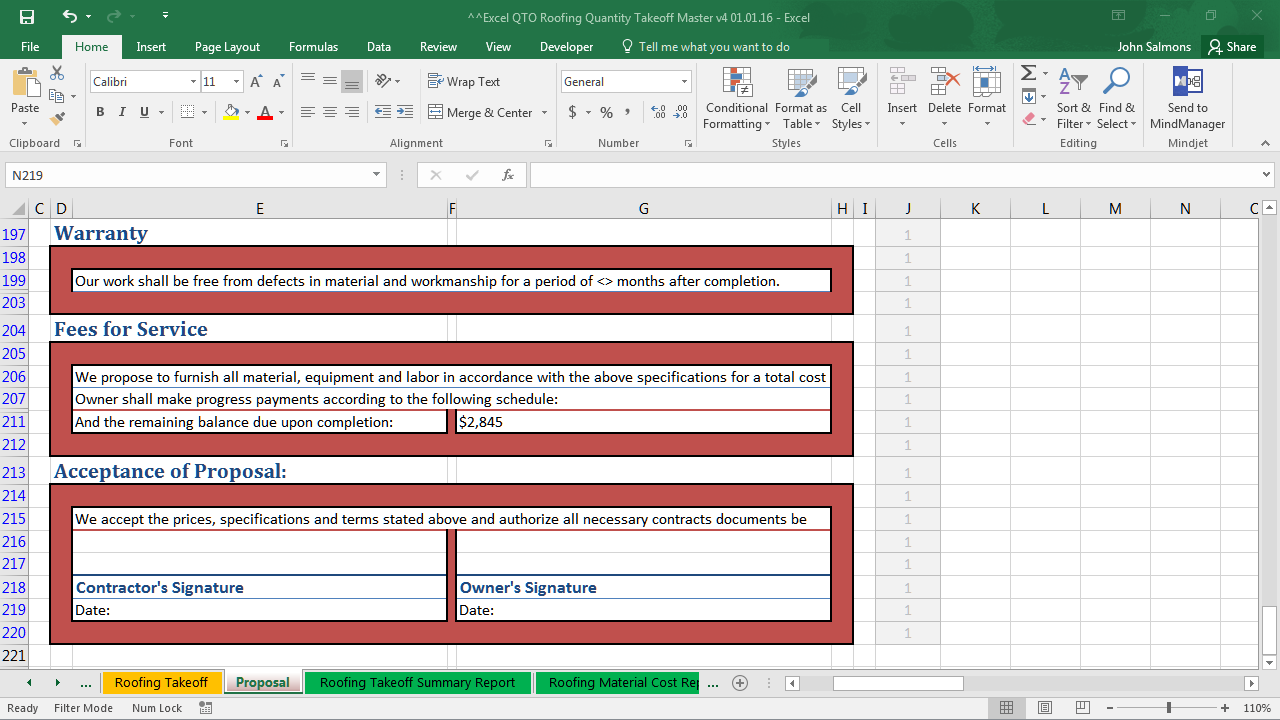
The Material and Labor Database
The database is an itemized collection of products commonly used on residential composition shingle roofing projects in the US. Out-of-the-box, the database includes approximately 500 items, with many including links to the manufacturer's product web pages. Additional roofing products can be added based on your needs. To include pricing with the takeoffs, your material and labor costs can be added to the database.
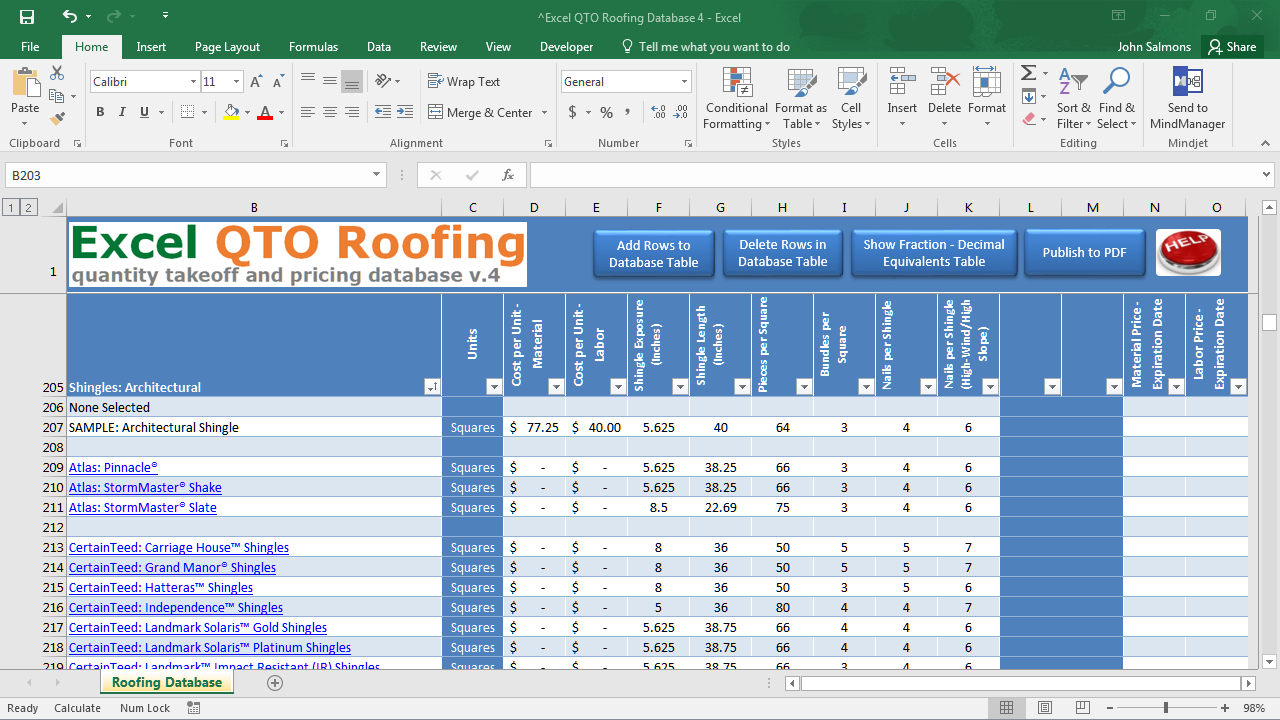
The database also houses your presets for waste factors, sales tax, material and labor mark-ups and project complexity mark-ups.
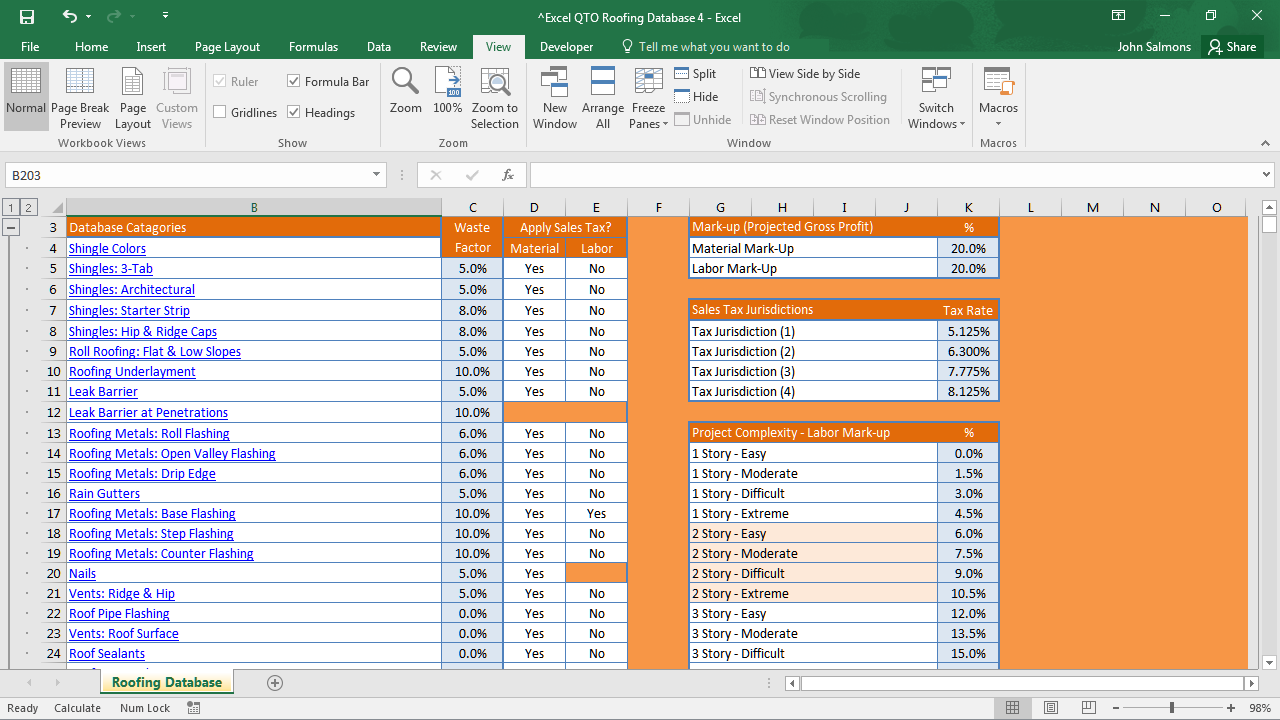
Features and Benefits


